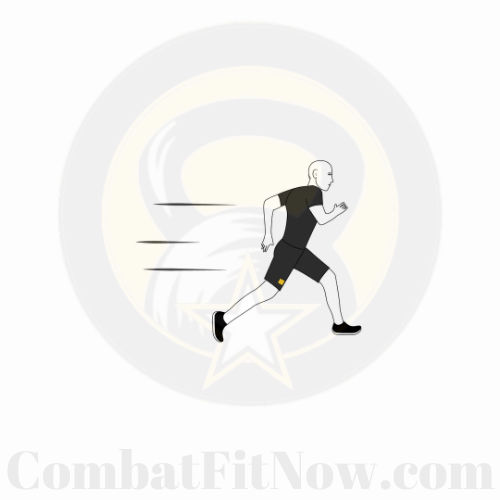The Sprint or Sprinting is a high-intensity exercise that involves running at maximum effort for a short distance. Here are proper instructions for sprinting:
Video Instructions on How to Do a Sprint
Before You Start:
- Warm-Up:
- Begin with a general warm-up to increase your heart rate (e.g., light jogging or jumping jacks).
- Perform dynamic stretches to prepare your muscles for explosive movements (e.g., leg swings, high knees, butt kicks).
- Specific Warm-Up:
- Perform light running or dynamic drills such as high knees, A-skips, or butt kicks to specifically warm up the muscles involved in sprinting.
- Proper Footwear:
- Wear appropriate running shoes with good support to minimize the risk of injury.
Sprinting Technique:
- Start Position:
- Stand with your feet hip-width apart.
- Place your weight on the balls of your feet.
- Keep your body upright, shoulders relaxed, and arms at your sides.
- Starting Stance:
- For a sprint start, use a three-point stance: one foot forward, the other foot back, and your hands on the ground.
- Position your back foot in the starting blocks or on the ground for a powerful push-off.
- Drive Phase:
- Explode out of the starting position using your back leg.
- Drive your arms forcefully to generate momentum.
- Maintain a low body position for the first few strides.
- Acceleration Phase:
- Gradually transition to an upright position as you gain speed.
- Focus on powerful, quick strides, lifting your knees and driving your arms back and forth.
- Maximum Speed:
- Once you reach maximum speed, maintain a tall posture.
- Continue driving your arms and legs with intensity.
- Breathing:
- Focus on deep, rhythmic breathing to supply your muscles with oxygen.
- Finish Line:
- Gradually decelerate as you approach the finish line.
- Use a controlled slowdown to prevent injury.
Post-Sprint:
- Cooldown:
- Slow down to a jog or walk for a few minutes to gradually lower your heart rate.
- Perform static stretching for major muscle groups to improve flexibility and reduce muscle tightness.
- Recovery:
- Stay hydrated and replenish electrolytes after your sprinting session.
- Allow time for adequate rest and recovery between sprinting sessions.
Remember, if you are new to sprinting or have any health concerns, it’s advisable to consult with a fitness professional or healthcare provider before starting a sprinting routine. Proper form and gradual progression are key to preventing injuries and maximizing the benefits of sprinting.



